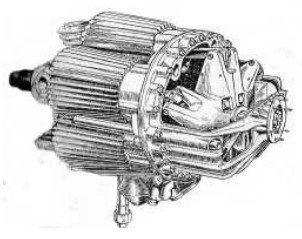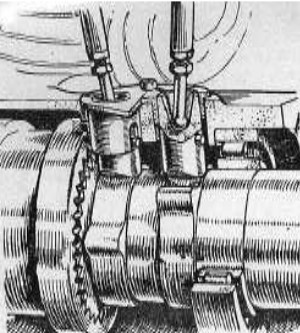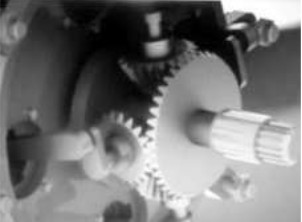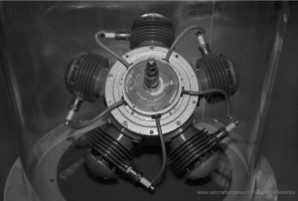Updated: 07-Oct-2021
REDRUP - LEVER
(UK)
See Redrup
Redrup was also known as Redrup-Lever. We now have new illustrations that are inserted in this revision-update. Some details are added to better understand this type of barrel motor.

“Redrup-Lever”
-We clearly observe the “spider” (wobble plate) that in its central part is articulated in an inclined crankpin of the crankshaft as we see in the faulty illustration below.

“Redrup-Lever Engine Schematics”
-The four-stroke cycles of its seven cylinders were effected by rotating cams on the engine shaft as we see now.

"Interesting part of distribution"
From Appendix 9: The brand's well-known four-cylinder axial engine is now shown in an interesting virtual work, from which we take some images showing the four crankshafts attached to the front planetariums.
-Different from the oscillating plate version.

"The virtual Redrup"

"Detail of the frontal mechanism, also virtual"
-A small Redrup 20 HP bi-rotary radial is exhibited at the Manchester Museum. This engine was made in 1913, during WWI, and other derivatives were made shortly after with the intention of reducing the harmful gyroscopic effects of rotating rotary radials.
See the Hart chapter. Redrup moved to this company from Leeds, where he continued with his generically named "reactionless" engines.
-In 1919 he did it through the Avro company with the “Alpha” engine.
-Later he designed the axial wobbleplate engine made by Crossley.

“The Redrup 20 HP engine”
-In the early days of Redrup, it were William Alban Richards and Charles Benjamin Redrup who made rotary radials.
-First there was one applied to a bicycle, replacing the original. Later there was a twin cylinder that we show below.

“Patent drawing”

"The twin-cylinder engine applied to an airship"
-The gear is regulated by paddle air brakes, similar to those used in watchmaking at the time. It was built around 1904-1905.


